
[Source:
Paul Wright & Alan Young]
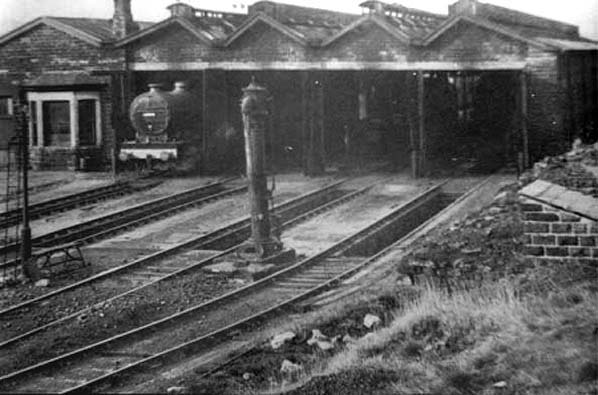 The locomotive shed at Bacup sometime after it had been re-roofed in 1934
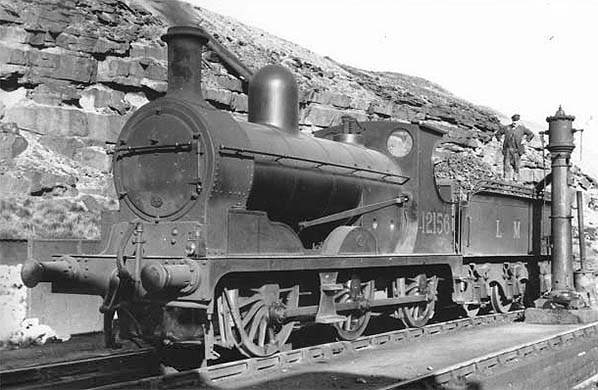 In June 1939 Aspinall 0-6-0 No.12159 is seen at Bacup shed sidings taking on water. The Class LYR27 loco was built at the company’s Horwich works in March 1892 and was assigned number 1143. The loco is seen here with its LMS number. After nationalisation in 1948 she was re-numbered 52156 by British Railways. In March 1953 she was withdrawn from 26A, Newton Heath shed, and ended her life back at Horwich works where she was cut up.
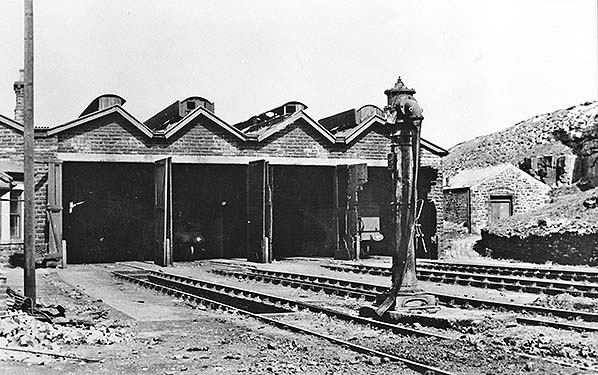 Bacup shed, looking west c1950. Some unidentified locomotives are visible within it. The water crane in the foreground will be noted.
Photo from John Mann collection 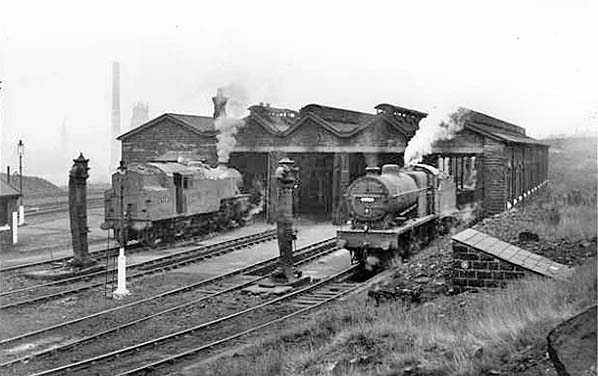
Bacup engine shed, looking east in October 1951. The loco on the right is a Fowler 7F 0-6-0. It is fitted with steam brake only, so is confined to freight working. The loco on the left is a Fairburn 4MT 2-6-4T. It appears still to be carrying its LMS number but it is unreadable.
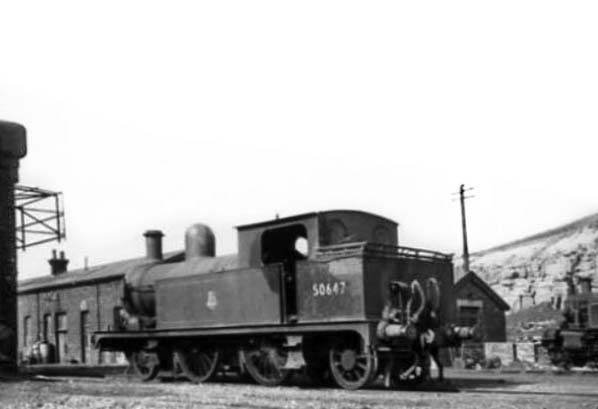
Aspinall-designed Class LYR5 2-4-2T, carrying its BR number 50647, is seen at Bacup engine shed shortly before its closure in 1954. The loco was built at the LYR Horwich works in September 1890. She carried LYR number 1052 and, subsequently, LMS 10647. She was withdrawn from 26C, Bolton shed, in February 1959 and cut up at Motherwell Machinery and Scrap, Inslow Works, Wishaw the following November.
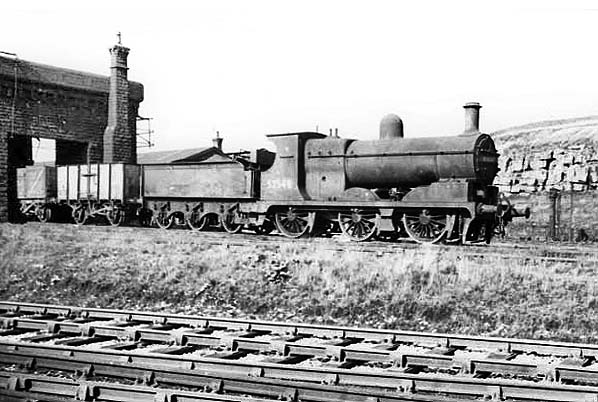 Bacup shed is in its final weeks: the photo dates from September 1954, and the shed closed the following month. No.52549 is a Class LYR 28 Hughes-designed 0-6-0. Built at the LYR Horwich works in June 1912 she was allocated No.239 by the LYR and 12549 by the LMS. She was sent to Bacup shed in March 1953. At the time of this photograph the loco is thought to be on shed pilot duties. This was to be her final home as she was withdrawn from service in November 1954 to return to her birthplace to be cut up. The view is looking north.
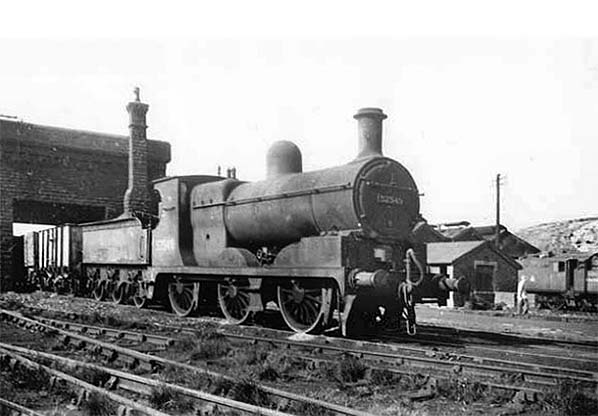
Basking in September sunshine at Bacup engine shed is No.52549, a Class LYR 28 Hughes-designed 0-6-0, in charge of some mineral wagons. Built at the LYR Horwich works in June 1912 she was allocated No.239 by the LYR and 12549 by the LMS. She was sent to Bacup shed in March 1953. At the time of this photograph the loco is thought to be on shed pilot duties. This was to be her final home as she was withdrawn from service in November 1954 to return to her birthplace to be cut up. A Stanier tank can be glimpsed in the background. Bacup shed closed in October 1954 but was not demolished until about a decade later. This view is looking north-westwards.
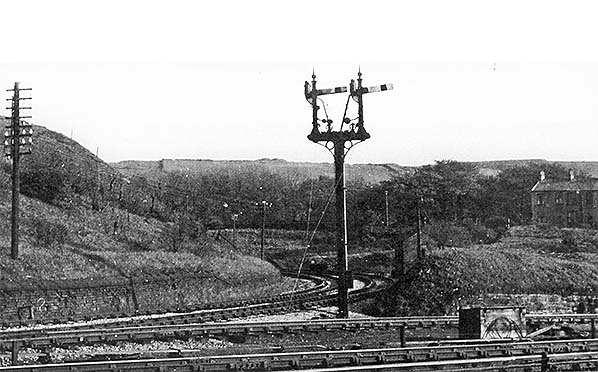
Looking south-east at Bacup Station Junction in May 1955. The line towards Waterfoot, Rawtenstall and Bury is from left to right and the sharply curving route towards Facit and Rochdale is ahead. The tightness of the curve requires check rails on both of the Rochdale tracks. The Rochdale route had closed to passengers in 1947 and to all traffic between Bacup engine shed and Facit in 1952. In 1954 the short section at Bacup from the junction to the engine shed had closed. However the rails have been retained (and would be until 1964) for wagon storage – a use to which, it appears, they were never put. Lancashire & Yorkshire Railway signals remain in place.
Photo by F W Shuttleworth 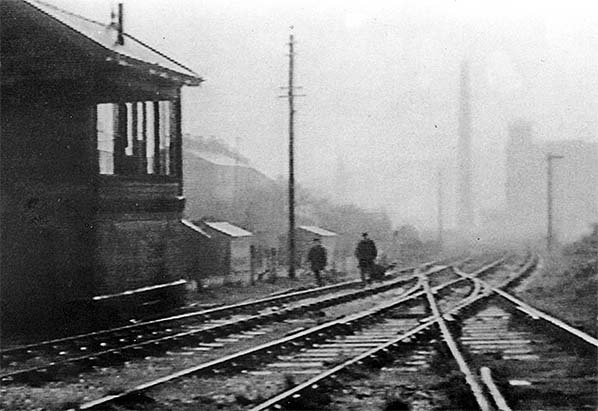
Looking north-west from the engine shed sidings towards Bacup in 1960. This is a frame from the film ‘Whistle down the wind’. The shed signal box is on the left. The gradient of the line here is severe, dropping at 1 in 34 into the fog towards Bacup.
Photo from of Whitworth Historical Society 5.jpg) Bricked in archway along Bacup Station's west boundary wall. This may have been built as part of the entrance to the first station built on the site as the later entrance was on Rockcliffe Road. The station was sited immediately behind the wall. Photo by Barney Smith from his Flickr ohotostream 1.jpg) Looking west towards the site of the entrance to Bacup station in Rockcliffe Road in October 2008. The station building was located next to the house with the rendered wall with the small white framed window. It fronted onto the street seen in the picture. The metal gates towards the left of the picture mark the entrance to the former sidings. This is taken from a similar viewpoint to the 1952 picture above. The buildings beyond the station can be seen in both pictures as can the stone wall on the left.
Photo by Paul Wright 2.jpg) Looking north at the site of Bacup station in October 2008. The station's island platform was off to the the left on the site now occupied by the large shed seen in this picture. Sidings occupied the land immediately to the left of the photographer. The blocked arch seen in the previous picture is in the wall on the right. Photo by Paul Wright 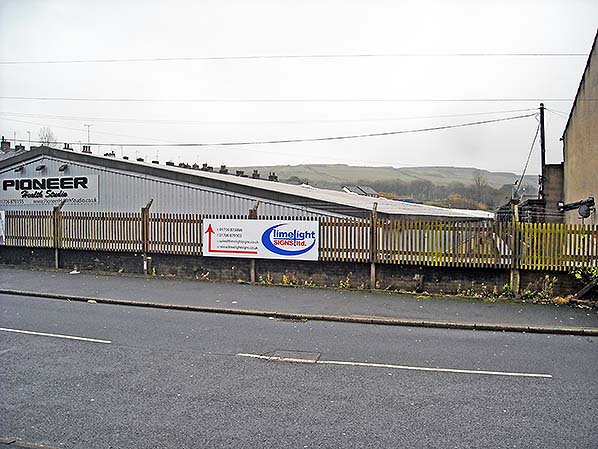
Looking south-east from Rockcliffe Road towards the site of Bacup station in December 2015. A large industrial unit used by a health studio and a signage firm occupies the site. The western retaining wall is seen on the right.
Photo by Alan Young 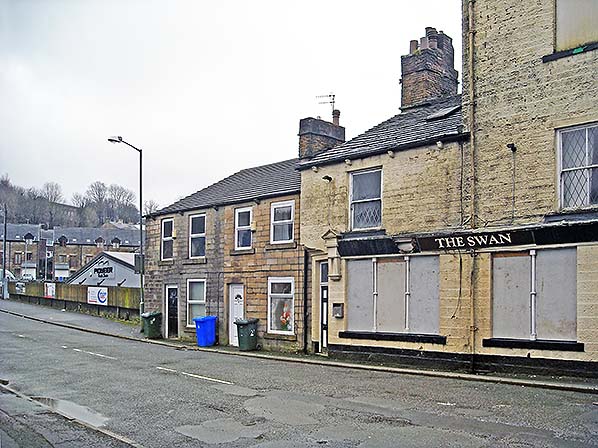
This view looking east on Rockcliffe Road in December 2015 places the former station in its context. Pioneer Health Studio, to the left, occupies the site of Bacup station.
Photo by Alan Young 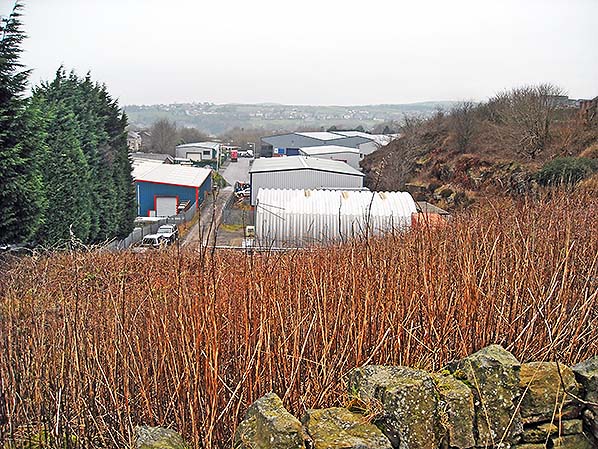 The site of the engine shed (closed 1954) and associated sidings at Bacup looking north-west in January 2016. The north-west portal of Britannia, or New Line, Tunnel is out of sight at the foot of the slope beyond the wall. The exposed rock on the slope some 200yd to the right can be seen on some of the views of the engine shed. ‘The Sidings’ industrial area occupies the site of the engine shed and sidings. Photo by Alan Young Click here for Bacup Gallery 7 (More additional photos)
|


 Home Page
Home Page